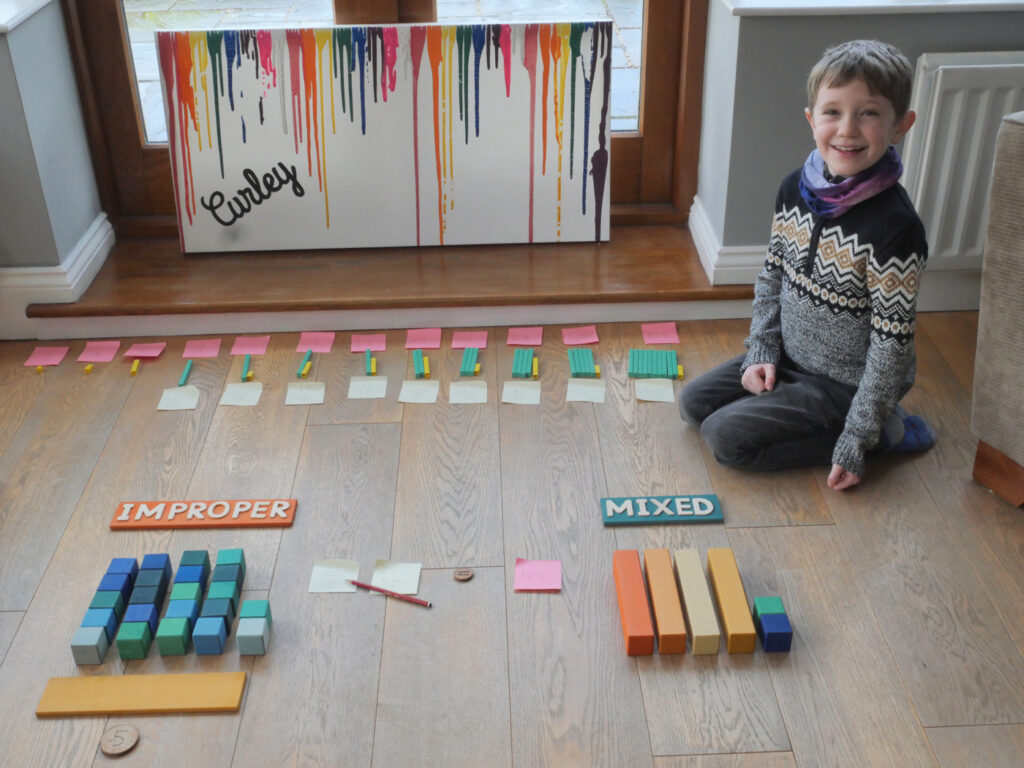Ioan describes how to write fractions in this previous post on Star Wars Fractions.
In it, he explains that the top number is called the numerator. The numerator is the number of equal parts we have.
The denominator is the bottom number and it shows the total number of parts the whole is divided in to.
Defining what mixed and improper fractions are.
A mixed number is made up of a whole number and a fraction. For example: 1 and 2/10.
An improper fraction is one that is ‘top-heavy’ so the numerator is bigger than the denominator. For example: 12/10.






Identifying mixed and improper fractions





















Ordering fractions









Converting an improper fraction to a mixed fraction















Comparing improper fractions with the same numerator
“If my numerator is always 12, will I always have the same fraction?”









Finny was working out how many ‘wholes’ different improper fractions could be worth, even with the same numerator.






Do fractions equivalent to one half have even numerators?









If a fraction is equivalent to one half, the denominator is double the numerator. True or false.






Their finished work.






DfES National Curriculum (2013)
Numeracy Year 2 programme of study
Number – fractions
- recognise, find, name and write fractions one third, one quarter, two quarters and three quarters of a length, shape, set of objects or quantity
- write simple fractions for example, a half of 6 = 3 and recognise the equivalence of two quarters and a half
Numeracy Year 4 programme of study
Number – fractions
- recognise and show, using diagrams, families of common equivalent fractions
- solve problems involving increasingly harder fractions to calculate quantities, and fractions to divide quantities, including non-unit fractions where the answer is a whole number
Number – multiplication and division
- recall multiplication and division facts for multiplication tables up to 12 × 12











